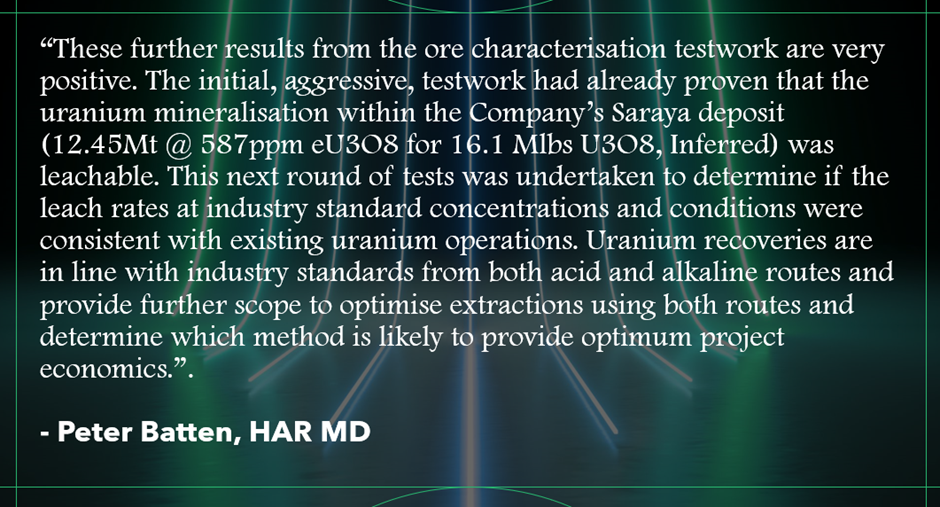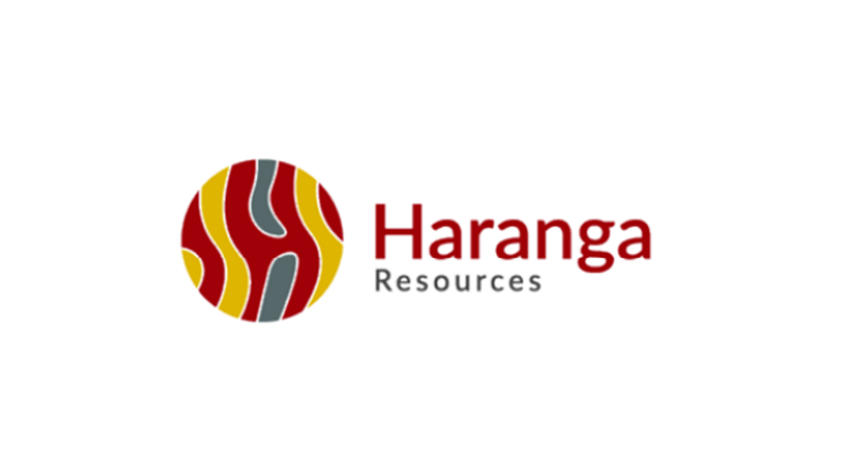Highlights
- Further testwork at the Saraya Uranium Deposit confirmed leach rates at industry standard concentrations and conditions are consistent with existing uranium projects.
- Uranium recoveries are consistent with industry standards for both acid and alkaline routes.
- Acid and alkaline conditions provide process optimisation options.
Haranga Resources Limited (ASX: HAR; FRA: 65E0) has released promising results from a preliminary sighter leach test campaign conducted on its most advanced project, Saraya. The testwork on drill core samples from the project, as part of an ore characterisation program, was carried out by SGS Lakefield and overseen by Independent Metallurgical Operations (IMO).
The testwork confirmed that leach rates at industry standard concentrations and conditions align with those of current uranium development projects and operations. The testwork demonstrated that uranium recoveries from both acid and alkaline routes are consistent with industry standards, presenting opportunities for process optimisation in both pathways.
IMO has proposed undertaking beneficiation testwork to evaluate the possibility of removing acid consuming carbonate minerals, aiming to further reduce acid addition rates without compromising uranium extraction rates. Additionally, IMO recommended further testwork to determine the minimum temperature required to achieve industry standard uranium extraction by conducting experiments at higher reaction times and gradually reducing temperatures.

Further details on metallurgical testwork
The company completed 22 diamond core drill holes in preparation for a maiden resource estimate. The aim of the drilling program was to validate a 65,000m drill hole database previously reported by explorers, Areva and Cogema. The program validated the presence and tenor of uranium mineralisation at Saraya.
Prior to this, no metallurgical testwork had been conducted for Sarya. HAR engaged IMO to conduct first pass sighter leach testwork. This aimed to determine the initial uranium recovery from a composite sample representing the uranium grade and mineralogy from the resource estimate.
The sample was composited from numerous holes at different depths to represent the mineral resource estimate results for Saraya.
Uranium recoveries in line with industry standards
The testwork was conducted at an elevated temperature of 95oC, with an excess sulphuric addition rate of 681 kg/t, resulting in uranium oxide extraction of >96%, surpassing other uranium operations.

Data source: Company update
Subsequently, two additional acid leach tests were conducted, the first at reduced acid consumption and the second at reduced temperature and acid consumption.
The first test yielded a uranium extraction of 84% with an acid addition rate of 224 kg/t. The second test showed lower uranium extraction compared to commercial acid uranium extractions, highlighting the necessity of a certain temperature for achieving commercially acceptable extraction.
Moreover, an alkaline leach test was performed at elevated temperature, achieving a similar uranium extraction of 84% to the low acid test.

Data source: company update
Concurrently, the company is advancing fieldwork in Senegal following the conclusion of the RC drilling campaign in March 2024. Infill and regional termite mound sampling (TMS) are ongoing, alongside auger drilling to investigate anomalous TMS results reported for Sanela, Mandankoly and Diobi, before moving to Diobi East, Saraya east and Saraya South.
HAR shares traded at AU$0.12 apiece at the time of writing on 22 May 2024.



